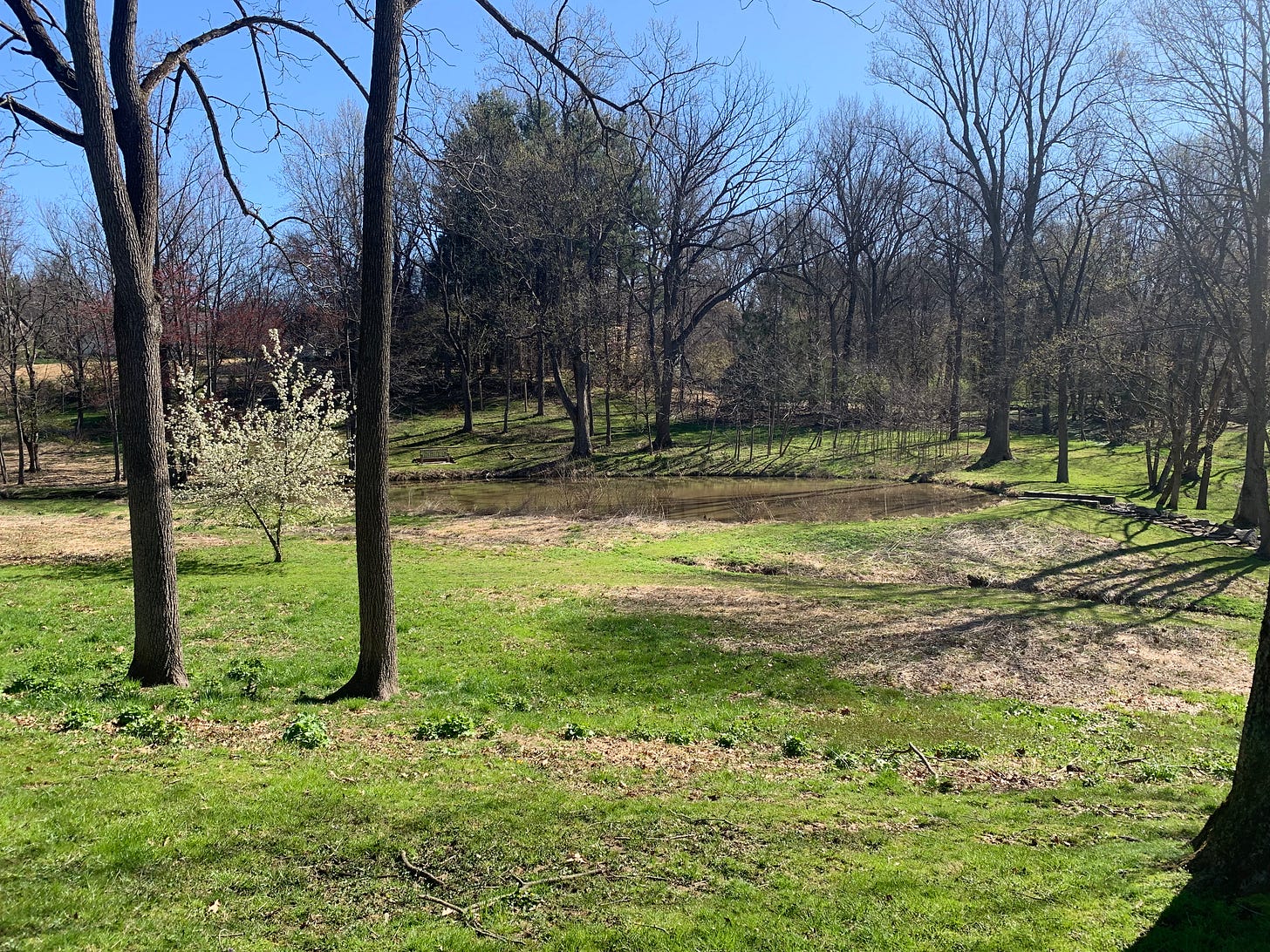This week, the song of the peepers came alive at the house we call Puddock Hill.
Spring peepers are small tree frogs that emerge from their winter slumber this time of year. The males climb up tree trunks and as light fades call raucously for a mate. On warmer evenings they grow more active.
We returned from a winter in California to the welcome signs of early spring: bright daffodils and forsythia in bloom; a wash of squills casting parts of the lawn in blue hues; early natives such as bittercress cropping up near woodland edges; and the first cherry and star magnolia trees putting on a show. (Our saucer magnolia won’t participate this year. Its buds suffered severe frost damage a week before we returned.)
The first part of the spring peepers’ species name (Pseudacris crucifer) derives from Greek for “false locust,” a reference to their shrill mating call. The second word, “crucifer,” means “cross-bearing,” for a distinctive marking they carry on their backs.
While the cross usually looks more like an X than a Christian cross, I can’t help thinking of Easter, which roughly coincides each year with emergence of the peepers. Of course, it’s no coincidence that many religions impart a ritual sheen to a season when, as T.S. Eliot famously reminded us, plants renew themselves out of “the dead land.”
Spring means resurrection, and what’s not to love about that? But the peepers have a special place in my heart for many reasons.
My wife, Pam, and I spent our early years after college in New York City, living together for the first time (officially, anyway) in the ground-floor apartment of a townhouse on Garden Place in Brooklyn Heights.
In Soho before then, we had lost much sleep to the nighttime rumble of idling trucks and the clatter of trash bags full of restaurant wine bottles. In contrast, our bedroom window on Garden Place looked out on a quiet tapestry of gardens. So quiet, in fact, that the occasional rustle of a dry leaf awakened us to the fearful possibility that a burglar could easily come through our open window.
In our late twenties, we relocated with great excitement to a big old house in Bedford Hills that looked out on a small pond. We moved in late spring, and on our first night there the cacophony of the peepers and American bullfrogs kept us awake, so unaccustomed had we become to the sounds of wildlife while living in the city. For those first few nights, we wondered whether we’d ever get used to the noise, but pretty soon the serenade of the frogs became a lullaby, and we missed them when they quieted down.
That was 30 years and several houses ago. At Puddock Hill we have two ponds, but only the smaller one hosts an appreciable troupe of spring peepers. Perhaps because the water is often muddy or because it’s just too shallow, no fish are present in that pond to eat the frog eggs or their tadpoles. As a result, it is fecund with not only tree frogs but green frogs, bullfrogs, and perhaps others, too. Here’s a picture of it, right before we removed the beautiful, but noxious Callery pear:
As stewards of Puddock Hill and of the inhabitants nature has deposited here, we take pains to protect and enhance the ecosystem of our little pond, and in turn the enthusiasm of the peepers lifts our hearts.
According to the National Wildlife Federation, “Amphibians are declining worldwide and are collectively one of the most at-risk groups for extinction.” Their delicate skin makes them susceptible to pollutants, novel disease outbreaks, and the consequences of climate change.
Although no one lists the three species of frog I’ve mentioned as endangered, and in fact they’re considered abundant in the United States, we have anecdotally noticed diminishing numbers of peepers in our area. Each year, they grow a little quieter, and we dread the possibility they may one day fall permanently silent.
I hope that day never comes, and if we all do our part it may not. Remember, spring is the season of resurrection. That includes us.



